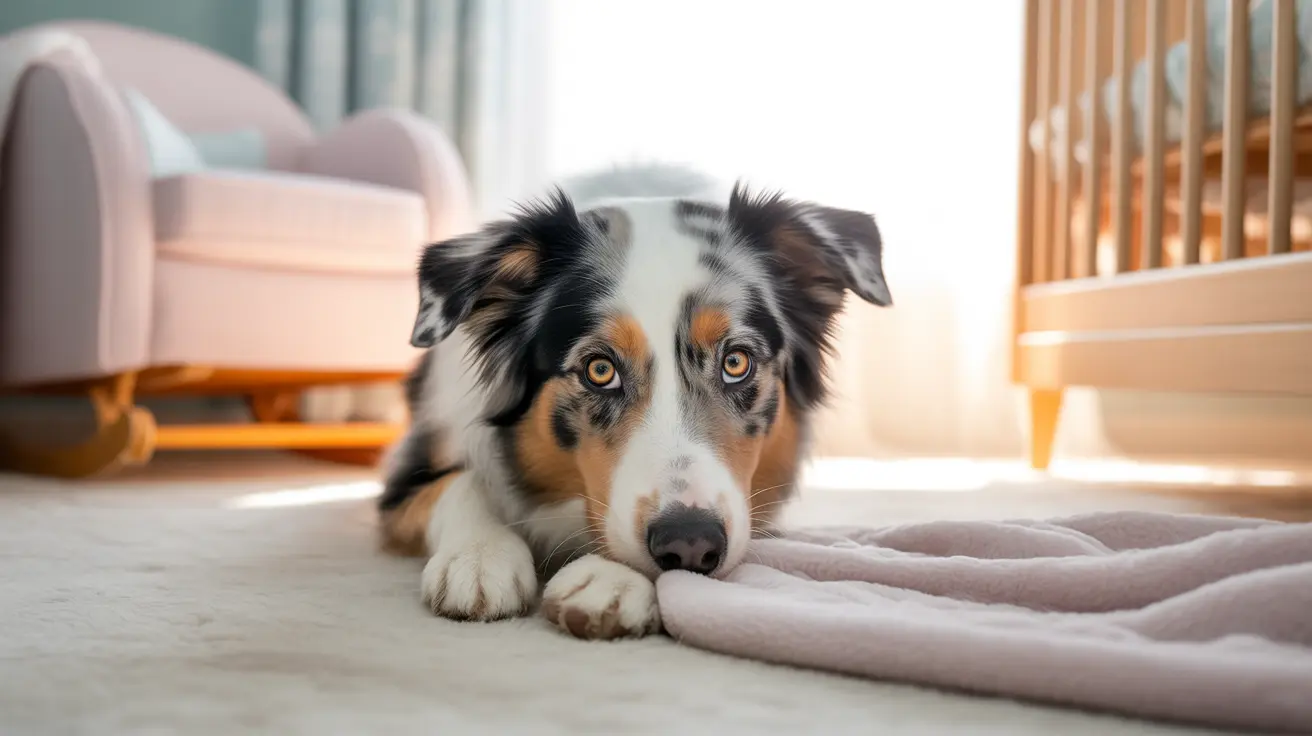Welcoming a new baby into your home is an exciting milestone that requires careful preparation, especially when you have a furry family member. Understanding how to prepare your dog for a baby is crucial for ensuring a smooth transition and maintaining harmony in your growing family. This comprehensive guide will walk you through essential steps to help your dog adjust to this significant life change.
Research shows that up to 40% of pet owners notice behavioral changes in their dogs after a baby arrives, making advance preparation vital for your pet's wellbeing and your peace of mind. Let's explore proven strategies to help your dog embrace their new role as a furry sibling.
Creating Positive Associations with Baby Items
Begin familiarizing your dog with baby-related items several months before your due date. Set up the nursery early and allow your dog to investigate the new furniture, stroller, and baby gear under supervision. Reward calm behavior around these items with treats and praise to build positive associations.
Consider using baby lotion or powder on yourself occasionally to help your dog associate these new scents with someone they trust. This gradual introduction helps prevent anxiety when these smells become more prevalent after the baby arrives.
Establishing New Routines and Boundaries
Dogs thrive on consistency, making it essential to implement schedule changes well before the baby arrives. Start adjusting walking times, feeding schedules, and play sessions to match your anticipated post-baby routine. This gives your dog time to adapt without associating these changes directly with the baby.
Install baby gates and establish new boundaries early. Decide which areas will become off-limits and begin training your dog to respect these spaces. Consider designating a quiet retreat area where your dog can relax away from baby-related activities.
Essential Training Commands for Baby Safety
Focus on reinforcing or teaching specific commands that will be crucial once the baby arrives. Key commands include:
- "Leave it" - For when the baby drops toys or food
- "Stay" - To maintain distance when needed
- "Go to your place" - For creating space during feeding or diaper changes
- "Gentle" - For calm behavior around the baby
Desensitization to Baby Sounds and Activities
Gradually expose your dog to baby-related sounds using recordings of crying, cooing, and laughing. Start at low volumes and increase gradually, always rewarding calm reactions. Practice common baby-care activities, like walking with an empty stroller or carrying a baby doll, to help your dog adjust to new movements and routines.
Managing Your Dog's Exercise and Mental Stimulation
Plan strategies to maintain your dog's physical and mental well-being after the baby arrives. Consider hiring a dog walker, investing in interactive toys, or setting up a rotating schedule with family members to ensure your dog continues receiving adequate exercise and attention.
Frequently Asked Questions
How can I gradually prepare my dog for the arrival of a new baby to reduce stress and promote positive behavior?
Start preparations 3-4 months before the baby's arrival by gradually introducing changes to routines, establishing new boundaries, and creating positive associations with baby items. Use positive reinforcement training and maintain consistent rules throughout the transition.
What are the best ways to introduce my dog to baby-related sounds, smells, and items before the baby comes home?
Play recordings of baby sounds at increasing volumes, use baby products around the house, and allow supervised exploration of baby items. Reward calm behavior to build positive associations with these new experiences.
How should I adjust my dog's routine and training to accommodate a new baby in the household?
Implement new schedules for walks, meals, and play sessions gradually before the baby arrives. Focus on reinforcing basic obedience commands and establish clear boundaries around baby areas.
What safety measures should I take to ensure calm and controlled interactions between my dog and my newborn?
Never leave your dog unsupervised with the baby, maintain physical barriers when needed, and always monitor interactions closely. Ensure your dog has a quiet space to retreat when feeling overwhelmed.
How can I manage my dog's jealousy, clinginess, or aggression after the baby arrives to maintain harmony at home?
Continue providing dedicated attention to your dog, maintain regular exercise routines, and reward calm behavior around the baby. Consider professional help if you notice concerning behavioral changes.
Conclusion
Successfully preparing your dog for a new baby requires patience, consistency, and advance planning. By following these guidelines and remaining attentive to your dog's needs throughout the transition, you can help create a harmonious environment where both your baby and dog can thrive together.






